All Spanish Courses
- Language and Culture
- Introduction to Literary Theory
- Interdisciplinary Study of Literature and Culture
- Cinema
- Visual Arts
- Religion
Language and Culture
SPAN 111 Beginning Spanish I
One unit semester course. In this language course, students will develop essential listening, speaking, reading, and writing skills in Spanish. Spanish grammar instruction is supplemented with study of cultural materials from Spanish-speaking countries. Conference.
SPAN 112 Beginning Spanish II
One unit semester course. This language course continues the development of essential listening, speaking, reading, and writing skills begun in Spanish 111. Students will learn enough language to handle a meaningful conversation, read short literary texts, and speak and write about their experiences, thoughts, and opinions. Spanish grammar instruction is supplemented with study of cultural materials from Spanish-speaking countries Pre-requisite: Spanish 111 or placement by examination. Conference.
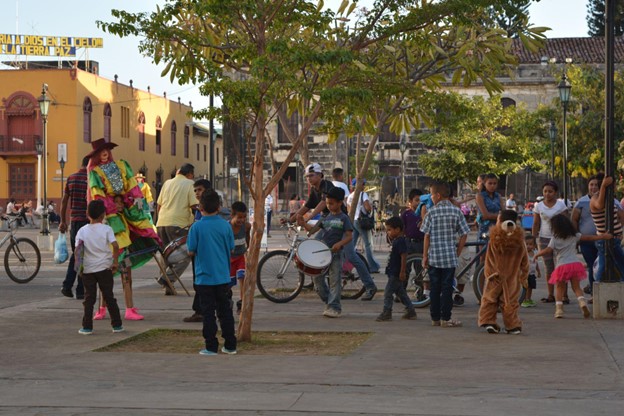
SPAN 211 Intermediate Spanish I
One unit semester course. In this language course, students will develop essential listening, speaking, reading, and writing skills in Spanish. Spanish grammar instruction is supplemented with study of cultural materials from Spanish-speaking countries. Conference.
SPAN 212 Intermediate Spanish II
One unit semester course. The primary goal for this course is to increase students’ fluency in both spoken and written Spanish. The course continues the systematic review of Spanish grammar begun in Spanish 211, yet places more emphasis on the spoken and written analysis of literary and cultural texts from the Spanish-speaking world. Students who complete Spanish 212 will acquire the necessary fluency to take advanced literature or film classes in Spanish, or to study abroad in a Spanish-speaking country. Pre-requisite: Spanish 211 or placement by examination. Conference.
SPAN 311 Advanced Language and Culture: Spanish Cinema
One unit semester course. This course provides a historical and critical overview of Spanish cinema from the early 1950s to the present. By analyzing films in their cultural context, along with selected critical texts, the course will explore questions such as censorship and ideology; war, reconciliation, and democracy; representations of gender and sexuality; immigration and exile; globalization; climate change; and others. We will watch and discuss films by Luis García Berlanga, Carlos Saura, Víctor Erice, Fernando Trueba, Pedro Almodóvar, Icíar Bollaín, Fernando León de Aranoa, Chus Gutiérrez, and Almudena Carracedo. This course is designed to refine and enhance language skills. It includes a focused consideration of problem areas of Spanish language and an introduction to various rhetorical forms. In addition to oral practice in class, students will write numerous short essays. Prerequisite: Spanish 212, equivalent with the consent of instructor or placement by examination. Conference.
SPAN 312 Advanced Language and Culture: Speculative Fiction
One-unit semester course. The category of speculative fiction refers to a diverse set of nonrealist approaches to narrative, including science fiction, horror, fantasy and the fantastical, utopia and dystopia. In this course, we will discuss how speculative fiction in the Spanish-speaking Americas draws from and hybridizes a number of robust regional genres (e.g., magical realism, the Latin American fantastic, horror and cyberpunk). We’ll consider how authors and filmmakers use these genres to critique and reimagine many facets of modernity, including repressive political regimes, digital technologies, neoliberalism and ecological catastrophe. Alongside this thematic focus, this course is designed to refine and enhance language skills. It includes a focused consideration of problem areas of Spanish language and an introduction to various rhetorical forms. In addition to oral practice in class, students will write numerous short essays. Prerequisite: Spanish 212, equivalent with the consent of instructor or placement by examination. Conference.
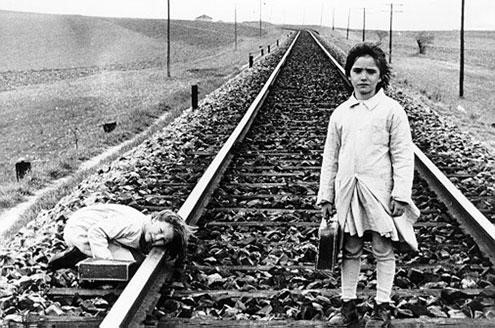
SPAN 312 Advanced Language and Culture: The Spanish Civil War.
This advanced study of Spanish language and culture takes as its thematic focus a study of the cultural and artistic production concerning the Spanish Civil War (1936-1939), a tragedy that began a period of extreme violence in which more than one million Spaniards were killed and that resulted in the dictatorship of Francisco Franco, lasting until Franco’s death in 1975. Characterized by the Historian Helen Graham as “a war of culture,” the Spanish Civil War is the subject of a great number of cultural works as the two sides attempted to justify and motivate their cause through the production of art and through other modes of communication. This course studies the war through a focus on this cultural production, from the propaganda we find in posters produced during the war, to speeches given by Franco at its end, and literary works published by authors in exile. Prerequisite: Spanish 212, equivalent with the consent of instructor or placement by examination. Conference.
SPAN 312 Advanced Language and Culture: Spanish Migrations
One unit semester course. For centuries, Spain has been defined as a country of emigration, from the expulsion of Jews and Muslims in the early modern period to the colonialization of the Americas. However, in the past 30 years, Spain has become a country of immigration (primarily of people from North Africa and Latin America) and large-scale internal migration. This course examines the representation of emigration, immigration, and internal migration in literature, film, art, and other cultural productions. How do contemporary artists represent what is for some immigrants a complex return to the “home” of their ancestors? How do they negotiate among a growing plurality of voices in a country that has imagined itself as homogeneous? How are calls for nationhood for an autonomous region (Catalonia, for example) represented nationally? This course is designed to refine and enhance language skills. It includes a focused consideration of problem areas of Spanish language and an introduction to various rhetorical forms. In addition to oral practice in class, students will write numerous short essays. Prerequisite: Spanish 212, equivalent with the consent of instructor or placement by examination. Conference.

SPAN 312 Advanced Language and Culture: Representations of Childhood in Hispanic Literature and Cinema
One unit semester course. This is an advanced Spanish course that takes up and deepens the study of important grammatical and stylistic categories within a specific thematic framework. A corpus of stories and two films, one Latin American and the other Spanish, whose plot revolves around childhood, will allow addressing different sociocultural and political issues. The children's imaginary will open a different perspective on issues such as racial discrimination, poverty, political violence and gender inequalities, among others. Within this broad thematic framework, the student will be able to exercise and develop both oral and written expression. Prerequisite: Spanish 212, equivalent with the consent of instructor or placement by examination. Conference.
Introduction to Literary Theory
SPAN 321 Theory and Practice of Hispanic Literature
One unit semester course. This course is designed to give students a theoretical, historical, and cultural framework for the more advanced study of Spanish and Spanish American literature. It will include considerations of genre, reception, and critical theory. Students will be responsible for undertaking close readings of the texts as well as research projects. Prerequisite: Spanish 212, equivalent with the consent of instructor or placement by examination. Conference.
Interdisciplinary Study of Literature and Culture
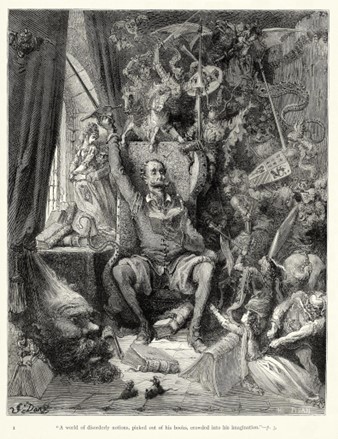
SPAN 343 Don Quixote and Narrative Theory
One unit semester course. This course will consist of a close reading of Cervantes’s masterpiece in conjunction with the works of theorists such as Michel Foucault, Gyorgy Lukács, Anthony Cascardi, and Mary Malcolm Gaylord, who have written about Don Quixote in the development and exploration of their various “theories of the novel.” To better understand the context of Don Quixote, we will begin with a careful consideration of political, cultural, and historical aspects of the Spanish Golden Age. During the final weeks of the semester we will read texts by Jorge Luis Borges and Paul Auster that exploit narrative conventions found in Don Quixote. We will end the semester with student presentations that focus on adaptations and appropriations of Don Quixote in modern narrative. Conducted in English. Students taking the course for Spanish credit will meet in extra sessions. Prerequisite for students taking the course for Spanish credit: Spanish 321 or equivalent with consent of the instructor. Conference. Cross-listed as Literature 343.
SPAN 361 Decentering the Human
One unit semester course. This course provides an introduction to what has been called the nonhuman turn, an umbrella term that refers to various schools of thought (such as posthumanism, critical race theory, animal studies, new and vital materialism, object-oriented ontology, and affect theory) that call for an integral redefinition of the human and thus question, critique, and/or move beyond human exceptionalism and the ontological dualities (nature/culture, human/nonhuman, mind/body, self/other, subject/object, etc.) that constitute it. The course combines interdisciplinary theoretical perspectives with a focus on how the relation between humans, nonhumans, and the environment has been represented, questioned, and problematized in cultural productions from the Hispanic world. The course ultimately asks students to think critically about what it means to be human today, if, that is, we have indeed ever been human. Conducted in English. Students taking the course for literature credit will read cultural texts in translation and write in English. Students taking the course for Spanish credit will read cultural texts and write essays in Spanish. Prerequisite for students taking the course for Spanish credit: Spanish 321 or consent of the instructor. Conference. Cross-listed as Literature 361.
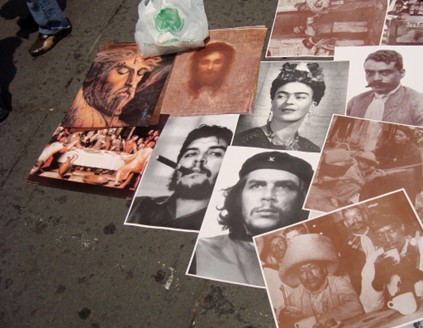
SPAN 365 Literature, State, and Nation in Nineteenth-Century Latin America
One unit semester course. This course examines the relationship between literature and politics understood in the framework of an intellectual history of nineteenth-century Latin America. The selected texts reflect the range of different meanings that the concept of nation takes on, according to the distinct context and junctures in which it is evoked. The first part of the course focuses on discourses about the nation that are primarily concerned with questions of culture and identity, as well as with mythical-symbolic import. Discussed in this light are neoclassical, romantic, and naturalist poetics. Representative genres read include poetry, short stories, novels, and essays by Olmedo, Heredia, Bello, Hidalgo, Echeverría, Gómez de Avellaneda, Matto de Turner, Altamirano. The rest of the term is devoted to a tradition of republican thought that addresses institutional and juridical problems. Readings include letters, essays, and speeches by Bolívar, Artigas, Lastarria, Sarmiento, Alberdi, and Bilbao, among others. Prerequisite: Spanish 321 or consent of the instructor. Conference.
SPAN 366 Federico García Lorca: Theater and Poetry
One unit semester course. When Federico García Lorca (1898-1936) was assassinated by Nationalist forces at the beginning of the Spanish Civil War, he was already, at age 38, an internationally recognized author, highly admired within Spain and abroad. This course examines Lorca’s creative output, focusing mainly on his theater and poetry but also considering his visual art and work as director of “La Barraca,” a travelling theater company whose mission was to bring theater to rural areas. In our study of the author’s work, from Andalusian “folklore” poetry and early dramatic farces, to avant-garde works influenced by surrealism and cubism, to his trilogy of tragedies focusing on existential problems confronting women in rural Spain, we will examine how Lorca engages with artists like Salvador Dalí, film director Luis Buñuel, composer Manuel de Falla, and the critical debates of the early twentieth century. We will also consider theories of artistic practice like “duende” (in this context, artistic emotion) or the “cante jondo” (Andalusian “deep song” that is incorporated into flamenco music) that Lorca presents in published lectures and essays. Readings may include selected poems from the Romancero gitano, Poeta en Nueva York, and Divan de Tamarit, and the dramas Mariana Pineda, La zapatera prodigiosa, Bodas de sangre, Yerma, La casa de Bernarda Alba, El público. Prerequisite: Spanish 321 or consent of the instructor. Conference.
SPAN 368 Jorge Luis Borges: Fiction and Criticism
One unit semester course. This course studies the writings of one of the most important authors of the twentieth century through various critical approaches that have been applied to his work: structuralism, poststructuralism, psychoanalysis, hermeneutics, and sociocriticism. Emerging from this corpus are two opposing views: one that associates Borges with the Argentinean literary system, foregrounding his participation in national aesthetic and cultural debates, and one that emphasizes the cosmopolitanism, skepticism, and sense of unreality marking his literature.
Also considered will be emerging critical studies that accentuate the historical and political relevance of Borges’s oeuvre. Along with these lines of inquiry, a series of theoretical categories and themes that are key for the comprehension of Borges’s writing will be discussed: avant-garde ultraism; criollismo; metaphor and metonymy; Argentinean tradition; reading, misreading, and translation; authorship and figures of the author; canon and literary genealogy; history, memory, and forgetting. Prerequisite: Spanish 321 or consent of the instructor. Conference.
SPAN 370: Peninsular Modernism: Between Empire and Fascism.
In 1898, in what was referred to commonly as “the Disaster,” Spain lost its final territories in the “new world” (Cuba, Puerto Rico, and the Philippine Islands) and entered into a period of political and social reform that had significant influence on literature and plastic arts. Although this period of political transformation and tremendous artistic liberty was complicated by the rise of Fascism in the 1930s, for many artists who later worked during the dictatorship of Francisco Franco, it became a point of reference, a “silver age” that equaled in many respects the “golden age” of Spanish literature (the 16th and 17th centuries). This course focuses on the years 1900-1930, a period characterized by experimentation with established literary and artistic genres and the development of new forms that both allowed a more complex representation of reality and supported attempts to renovate and reform the socio-political reality of Spain. Texts studied include works by Valle-Inclán, Unamuno, García Lorca, and Ortega y Gasset as well as works of art by Santiago Rusiñol and Picasso.
SPAN 377 Art after Dictatorship: Post-Franco Literature and Culture
One unit semester course. What happens to a culture when released from systematized repression? This course examines the creative explosion in literature and film produced in Spain after 1975, the year in which Francisco Franco died and his totalitarian regime ended.
Conference discussion will concern transformations that characterize the post-Franco era: the recuperation (or not) of historical memory, the emergence of a fluid conception of gender, and the creation of new forms of popular art. Particular attention will be given to the “movida,” the disruptive social and cultural transformations celebrated in the films of Pedro Almodóvar and others. Films and readings will include works by Almodóvar, Ventura Pons, Carmen Martín Gaite, Rosa Montero, Juan Marsé, and Eduardo Mendicutti. Prerequisite: SPAN 321 or consent of the instructor. Conference.
SPAN 378 Space and Power
One unit semester course. What is space? How is it perceived, experienced, produced, and reproduced? And what is its connection with power and relations of domination/emancipation? Drawing from spatial, urban, political, feminist, and critical race theory, this course aims to explore and analyze these questions in relation to the representation and problematization of domestic, urban, national and border spaces in, mostly, Latin American novels and films. Conducted in English. Students taking the course for literature credit will read cultural texts in translation and write in English. Students taking the course for Spanish credit will read cultural texts and write essays in Spanish. Prerequisite for students taking the course for Spanish credit: Spanish 321 or consent of the instructor. Conference. Cross-listed as Literature 378.
Spanish 380: Drugs, Gangs & Aliens
In this course, we will address and think critically about the interrelated nature of irregular immigration to the U.S., the drug trade and the “War on Drugs,” and the expansion and criminalization of gangs throughout the Americas. We will examine how cornerstones of state sovereignty such as the rule of law, the care and control of space and population, and the monopoly on violence are being challenged by these phenomena, as well as analyze, question and discuss their representation and problematization in Latin and North American literary works, essays, chronicles and films in relation to theoretical concepts and processes such as sovereignty, violence, neoliberalism, border, immunity/community and globalization.
SPAN 381 Literature and Culture of Argentina from Independence to the Present
One unit semester course. In the framework of an Argentinean cultural history, this course analyzes the relationship between aesthetics, ethics, and politics. A series of nineteenth- and twentieth-century texts, both fictional and nonfictional, will serve to trace the trajectory from a political use of literature to the emergence of an autonomous intellectual sphere. The course is organized around the topics of “civilization and barbarism”; gauchos, frontiers, and “the desert”; the Generation of 1880 and immigration; Peronism and anti-Peronism; and militarism and democracy. Prerequisite: Spanish 321 or equivalent with consent of the instructor. Conference.
SPAN 382 Latin American, Caribbean, and Latinx Critical Theory
This course focuses on how Latin American, Caribbean, and Latinx critical theorists, philosophers, writers, and artists have themselves imagined, conceptualized, and understood Latin America, the Caribbean, and the U.S. as geographical, cultural, social,and political spaces. Topics will include race, ethnicity, gender, and indigeneity in the Americas, as well as concepts and theoretical discourses such as indigenismo, mestizaje, hybridity, latinidad, négritude, liberation philosophy, and postcolonial, decolonial, and borderlands theory, among others. Readings will include theoretical and literary works, as well as essays and films. Conducted in English. Students taking the course for Spanish credit will read cultural and critical texts in Spanish when originally written in Spanish; they will also write essays in Spanish. Students taking the course for Literature or CRES credit will read will read cultural and critical texts in translation when originally written in Spanish, and they will write in English. Prerequisite for students taking the course for Spanish credit: Spanish 321 or consent of the instructor. Conference. Cross-listed as LIT 398 and CRES 338.
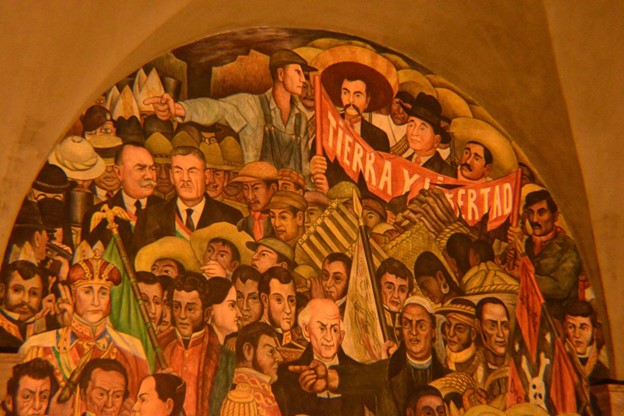
SPAN 384/LITS 397 Latin America’s Revolutionary Century
One unit semester course. Throughout the twentieth century, Latin America was one of the epicenters of insurgent and revolutionary struggles in the world. These represented, regardless of their ideological differences, the entry of the equality principle in national spaces that had mostly imagined and structured themselves as two-tiered societies in which a large segment of the population—Indians, minorities, and even women—had been, for all practical purposes, systematically excluded. By focusing on the cultural production (novels, films, essays, etc.) related to four revolutionary constellations—the Mexican and Cuban Revolutions, the Central American guerrillas, and the Zapatistas—this course aims to explore and analyze the languages of insurgency and counterinsurgency, the figure of the revolutionary and guerrilla fighter as a political subjectivity, and the relation between politics and aesthetics. Primary texts will be supplemented with historical and theoretical readings. Prerequisite: Spanish 321 or consent of the instructor. Conference. Cross-listed as LIT 397.
Cinema
SPAN 372/LITS Documentary Resistance in Latin America and Spain
One unit semester course. What makes a documentary a form of resistance? What defines this genre or mode? What elements and techniques characterize these documentary films? The course focuses on documentary films from Latin America and Spain that represent struggles for social justice and function as a cultural form of protest and resistance. By discussing the films in their historical and political contexts, the course examines the strategies, genres, and techniques that filmmakers use to address and participate in social change, as well as ethical and aesthetic questions about representation and production. We will watch and discuss films by Patricio Guzmán (Chile), Fernando Solanas (Argentina), Mario Handler (Uruguay), Lourdes Portillo (Mexico), Claudia Llosa (Peru), and Xapo Ortega and Xavier Artigas (Spain), among others. Prerequisite for Spanish credit: Spanish 321 or consent of the instructor. Conference. Cross-listed as Literature 372.
SPAN 367: Law and Violence in Contemporary Peninsular Cinema
One unit semester course. The course focuses on cinematic representations of law and violence in the context of contemporary Spain. We study how films present particular ethical or legal problems (i.e., gender violence, terrorism, capital punishment, torture, racism), the diverse views on law and justice they provide, and the judgments they invite viewers to make. Students learn to identify the assumptions that make them experience some kinds of violence as “normal” or “justified” while perceiving others as “excessive” or “illegitimate.” We also try to understand what makes us empathize with the suffering of a victim of violence or with the actions of a perpetrator, noting in particular the cinematic mechanisms and devices that facilitate the judgment that certain kinds of violence may be “merited” or “deserved.” In other words, the course encourages students to reflect critically upon how film mediates their own affective responses to the representation of violence. We watch and discuss films by Luis Buñuel, Carlos Saura, Víctor Erice, Juan Antonio Bardem, Pilar Miró, Montxo Armendáriz, Pedro Almodóvar, Alex de la Iglesia, Icíar Bollaín, Enrique Urbizu, Alberto Rodríguez, Guillermo del Toro, Alejandro Amenábar. The analysis of films is complemented by readings on legal and political theory, film studies, and philosophy (including the works of Arendt, Benjamin, Foucault, Butler, Sontag, Young, Scarry, Shapiro, and Derrida). Conference.
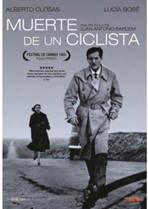
SPAN 371/LITS 371: Sensing Justice: Cinema and the Politics of the Senses
One unit semester course. The course explores the narrative, visual, and aural frames and also the sensory perceptions and affects that mediate the various dimensions of justice (procedural, retributive, and distributive). Whether and how we make ethical, political, and legal judgments and whether and how we legitimize the institutions charged with administering justice depends upon these frames and perceptions. The main goal of this course is to identify and examine how these various “sensory frames” help to mediate justice. What senses do these frames privilege (or ignore)? What subjects do they show and construct? How do they make us feel, see, touch, taste, and smell in certain ways rather than others? The course explores these questions through contemporary Spanish cinema and readings on legal theory, film theory, and politics (including works by Deleuze, Rancière, Manderson, Philippopoulus-Mihalopoulos, Marks, Elsaesser, Sobchack, Chion, and Doane). Cross-listed as Literature Literature 371.
SPAN 376: Cinema and Human Rights
One unit semester course. This class is an opportunity for students to develop an understanding of the concept of human rights through an analysis of films (either fictional or documentary). It explores the notion that human rights films are a powerful tool for raising awareness of human rights violations and for inducing spectators to take political action, as underlined in the Charter of the Human Rights Film Network, established in 2004 to promote human rights film festivals around the world. Through the lens of selected contemporary human rights films, the seminar explores questions such as: What forms of awareness do human rights films raise? What ethical dilemmas do filmmakers face in representing human violence and suffering? How truth can be defined in Human Rights Cinema? How can film help us to establish it? How do the narrative and aesthetic choices of filmmakers shape the judgments of spectators? The course offers a comparative analysis of a variety of historical cases (Germany, South Africa, Algeria, Chile, Argentina, Perú, Colombia, Bolivia, Guatemala, and Spain) and draws students into the complexity of ways of engaging these events, via films, academic literature, human rights reports, testimonials of victims, memorial museums and monuments, and photography. Films discussed in class include: Judgment at Nuremberg (Kramer, 1961), The Battle of Algiers (Pontecorvo, 1966), La jaula de oro (Quemada-Díez, 2013), El norte (Nava, 1983), Las madres de la Plaza de Mayo (Portillo, 1985), El botón de nácar (Guzmán, 2015), Long Night's Journey into Day (Hoffman & Reid, 2000), and The Salt of the Earth (Salgado & Wenders, 2014). Conference.
Visual Arts
SPAN 344 Visual Art in Spanish Baroque Literature
One unit semester course. This course studies the relationship between visual art and literature in early modern Spain. In an epoch in which the production of images has attained unprecedented cultural importance, literature redefines its aesthetic agenda, both modeling itself after and rivaling visual art. Considering various plays, poems, and novellas alongside relevant paintings, emblems, architectural works, and sculptures, we reflect upon how the interactions among these different art forms serve to mobilize audience emotion and comment on gender and class tensions. Also discussed are mounting anxieties about the role of art in a society marked by political crisis. In particular, we think about how the celebration of iconocentric culture is undercut by critical views of images as dangerous vehicles of moral and sexual depravity. Authors and artists studied include Teresa of Avila, Cervantes, Zayas, Calderón de la Barca, Guillén de Castro, Velázquez, Titian, El Greco, and Rubens. Conducted in English. Prerequisite for Spanish credit: Spanish 321 or consent of the instructor. Conference. Cross-listed as LIT 391.
SPAN 375 Memory and Image in Latin American Literature and Art
One unit semester course. This course focuses on memory and image, two categories that have acquired great relevance since the 1980s, in ethical, political, juridical, epistemological, and aesthetic domains. The terms “subjective turn” and “iconic turn” used by cultural critics reflect this phenomenon that is analyzed through recent literary and visual artworks. Together with testimonies and other nonfiction works, a series of documents embodying different memorialization policies (museums and memorial sites) are examined and contrasted withpractices (literature, performance, visual arts) that use aesthetics to engage with the past. Particular attention is paid to the presence of the imaginary, the anachronistic, obsolescence, and the emptying of objects. Parallel to the ethics-political character of memory, the function of forgetting and the intellective in relation to the past is discussed. Included are works by Rodolfo Walsh, Doris Salcedo, León Ferrari, Mario Bellatin, Cynthia Rimsky, Alejandro Zambra, Ricardo Piglia, Alan Pauls, José Emilio Pacheco, Margo Glantz, and Diamela Eltit. Prerequisites: Spanish 321 or equivalent. Conference.
Religion
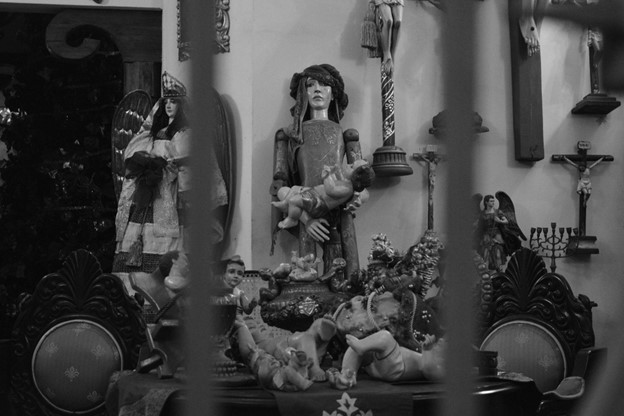 SPAN 351 Saints and Sinners: Women in the Early Modern Transatlantic World
SPAN 351 Saints and Sinners: Women in the Early Modern Transatlantic World
One unit semester course. Targets, on the one hand, of criminalizing or pathologizing discourses that called for their exclusion from the public sphere, women were also key agents of hegemonic power in the Spanish colonial world. This course reflects on the generation of mutually conflicting female subjects in a context obsessed with the fight against religious and cultural otherness: the sinning body prone to sexual temptation and demonic possession and the saintly body, exemplary imitator of Christ’s suffering. Considering a varied corpus of Inquisition trials, spiritual autobiographies, wifely conduct manuals, mystical poetry, novellas, chronicles, paintings, and printed images from Spain and its American colonies, we think about the contradictions inherent in global Counter-Reformation gender politics and the myriad ways in which female writers and fictional personae co-opt or resist the stringent corporeal and mental discipline imposed on them. Students will, in addition, gain an understanding of the rich web of associations between religious confessional culture and emergent fictional genres. Authors studied include St. Teresa of Avila, Fray Luis de León, Christopher Columbus, Bartolomé de las Casas, María de Zayas, St. Rose of Lima, Sor María de Agreda, and Sor Juana Inés de la Cruz. Conducted in English. Prerequisite for Spanish credit: Spanish 321 or consent of the instructor. Conference. Cross-listed as Literature 351.
SPAN 373 Religion and Modernity in Latin American Culture
One unit semester course. In this course we will discuss figures and concepts from the major religious traditions of Latin America as they appear in short stories, novels, poetry, and drama from the twentieth century. We will consider the definition of modernity as a “disenchantment of the world,” and ask what that means in a region that through the present day boasts vibrant indigenous traditions and a strong Catholic presence with origins in colonialism. . The course will focus on the use of religious thought as a critical tool for examining social and political issues, such as racial and economic inequality, sectarian violence, and national identity. We will consider whether religion is a unique way of knowing, the influence of theology and belief on political systems, and what role literature has in redrawing the boundaries between politics, culture, and tradition. Conducted in Spanish. Prerequisite: Spanish 321 or consent of instructor. Conference.